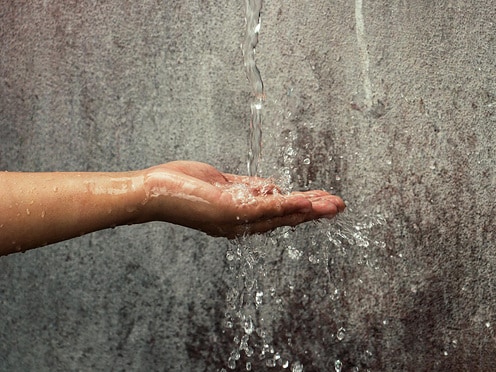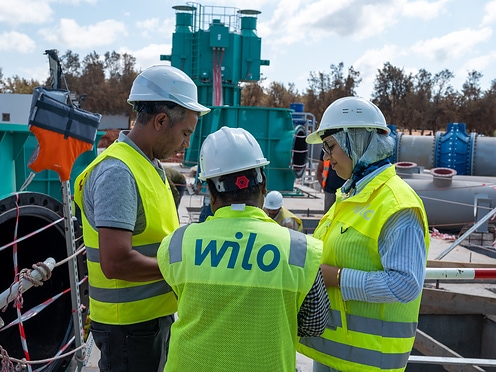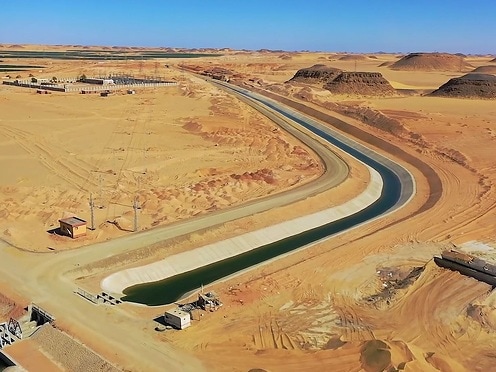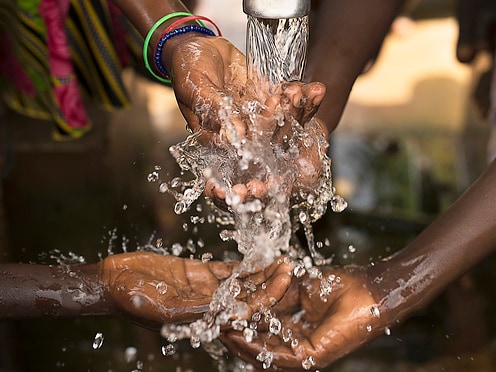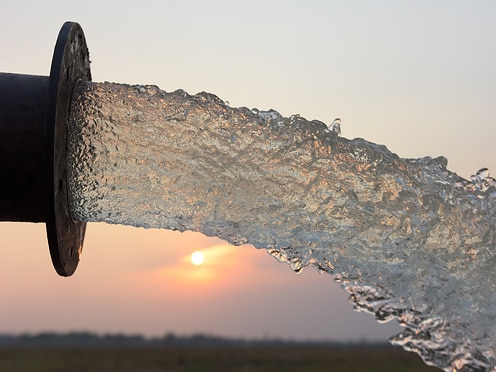Beef, nuts, rice: These foods consume the most water
We were wondering: which foods consume the most water? To find out, we compared ten unprocessed foods. The exact consumption always depends on numerous factors such as region, type, irrigation system and cultivation methods. However, the specified values are a good indication of how much water is consumed in the production of various foods.
This text is part of Wilo's annual report 2022.
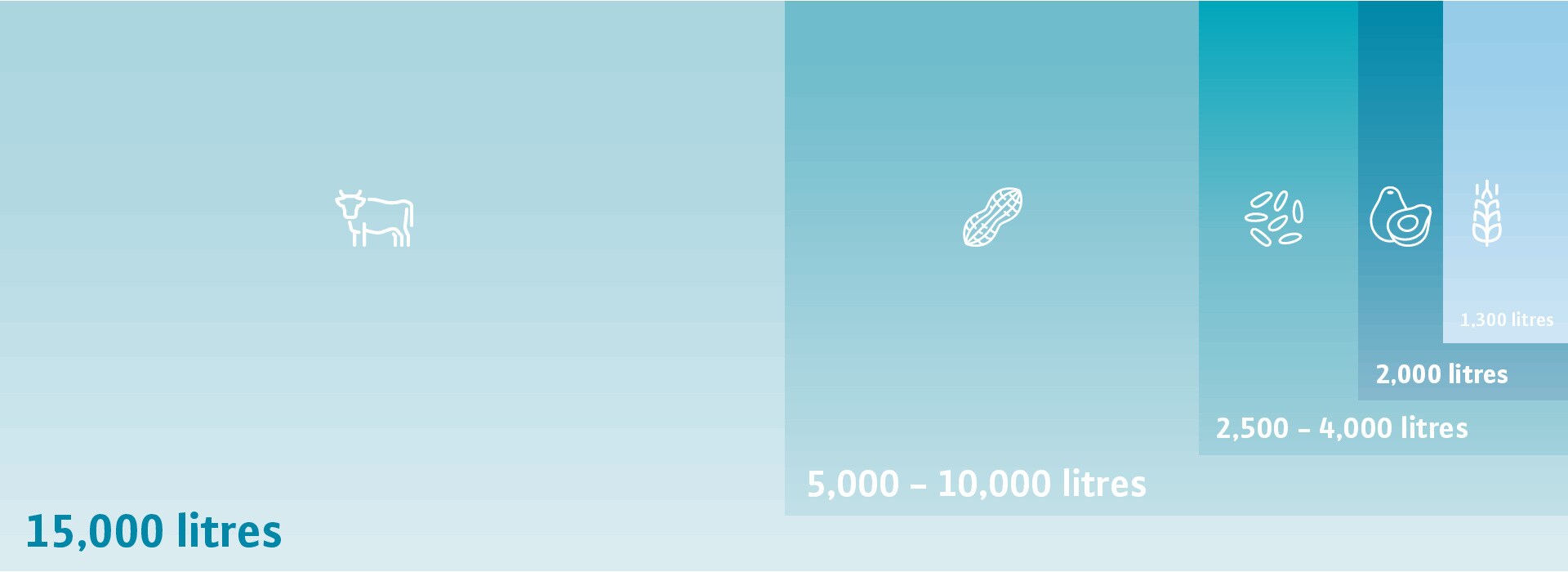
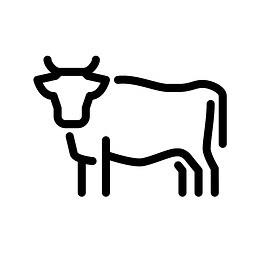
1. Beef
The production of 1 kilogram of beef uses a good 15,000 litres of water. This makes it the most water-consuming of the unprocessed foods. In comparison, 1 kilo of pork uses around 6,000 litres, and 1 kilo of poultry around 4,300 litres of water in production.
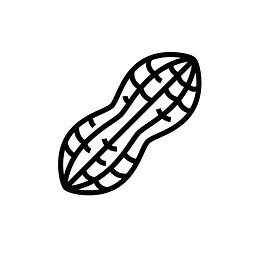
2. Nuts
The production of 1 kilogram of nuts uses 5,000 to 10,000 litres of water. There are big differences depending on the type of nut. Walnuts and hazelnuts are at the lower end of the scale, while almonds, cashews and pistachios rank particularly unfavourably when it comes to using resources. Overall, however, all nuts consume a lot of water.
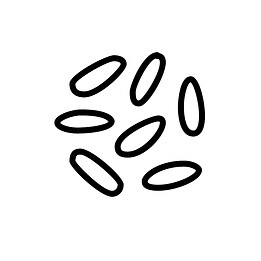
3. Rice
The production of 1 kilogram of rice uses 2,500 to 4,000 litres of water. Rice is the third most commonly grown crop in the world and requires an extraordinary amount of water to cultivate. 91% of rice-growing areas are in Asia, where the grain is also the most important staple food in many countries.
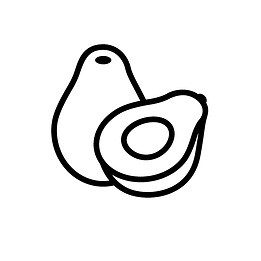
4. Avocado
The production of 1 kilogram of avocado uses approx. 2,000 litres of water. Its cultivation has led to environmental problems in many regions of South and Central America. Firstly, because forests are cut down to make room for plantations, and secondly, because of the high water consumption, which repeatedly leads to water shortages at local level.
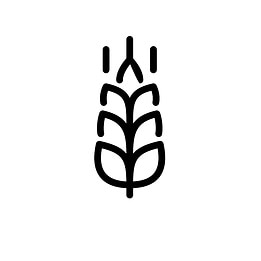
5. Wheat
The production of 1 kilogram of wheat uses around 1,300 litres of water. Together with rice and maize, wheat is the most important staple food worldwide. Cereals are sensitive to climate change; higher temperatures or lower precipitation can easily lead to crop failure. One solution could be old, climate-resistant varieties.

6. Cassava
The production of 1 kilogram of cassava uses approx. 900 litres of water. Cassava is one of the ten most frequently cultivated crops in the world and is an important renewable resource for biofuels, a source of starch and the basis for bioplastics, but is also an important staple food for around one billion people. Although it can easily survive dry periods, it requires a lot of water to cultivate overall.
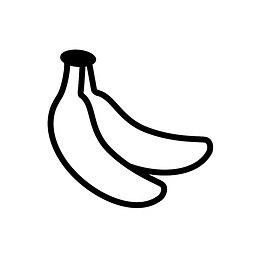
7. Bananas
The production of 1 kilogram of bananas uses approx. 800 litres of water. Compared to other types of fruit, banana cultivation requires a lot of water, but it is also very rich in energy. In order to grow, bananas need a tropical climate and at least 1,500 hours of sun per year.
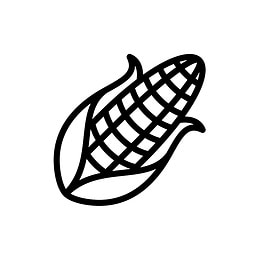
8. Maize
The production of 1 kilogram of maize uses around 550 litres of water. Maize is the most widely grown crop in the world, with only about 15% of the yield used for food. 63% of the world’s maize harvest is used as animal feed, the rest is processed or used as bioenergy.
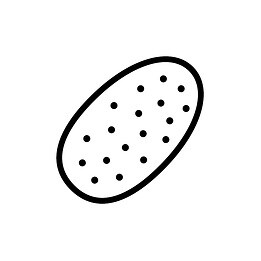
9. Potatoes
The production of 1 kilogram of potatoes uses around 300 litres of water. Around 3% of the world’s harvest comes from Germany, with the largest potato producer being China, which accounts for around a quarter. Potatoes have an excellent water balance and a very good environmental footprint.
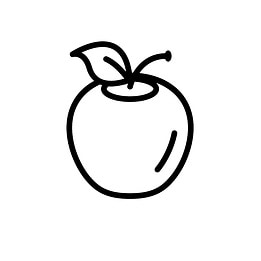
10. Apples
The production of 1 kilogram of apples uses 70 to 170 litres of water. Apples have an excellent record when it comes to water consumption and are Germany’s favourite fruit. However, the main producer of apples is China with around half of all apples harvested worldwide coming from there.

